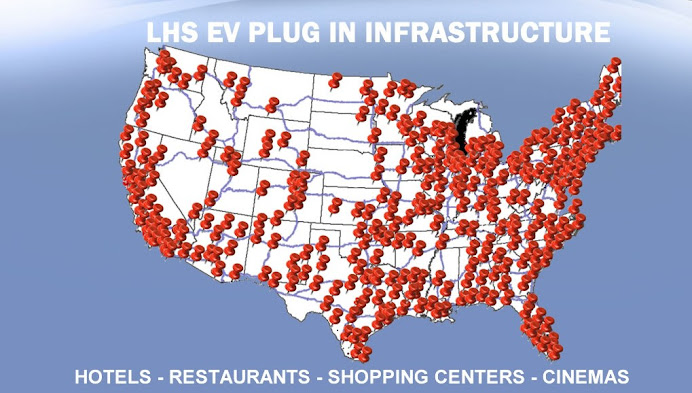 Automobile manufacturers in industrialized nations which already have high-level standards for quality, safety, reliability, etc, express disbelief that Think Nordic's approach to EVs could actually produce anything like a real car. Some manufacturers in nations like the United States or Japan are still cool to the idea of EVs at all, compared to hybrids or PHEVs. Many people seem to agree with this source at Toyota Motor, who says "EV applications are going to stay limited for some time to come."
Automobile manufacturers in industrialized nations which already have high-level standards for quality, safety, reliability, etc, express disbelief that Think Nordic's approach to EVs could actually produce anything like a real car. Some manufacturers in nations like the United States or Japan are still cool to the idea of EVs at all, compared to hybrids or PHEVs. Many people seem to agree with this source at Toyota Motor, who says "EV applications are going to stay limited for some time to come."
Part of the reason for this attitude is that the batteries available today lack sufficient range per charge, and their service lives are not long enough for automotive use. According to an estimate presented by Toyota Motor, the charge/discharge depth of rechargeable batteries in EVs is several times greater than in PHEVs, limiting the charge/discharge cycle life to about two thousand cycles. This is only about 20% that of PHEVs.
In burgeoning economies like India, China and other nations, with huge populations, however, people are looking at EVs quite a bit differently. They all claim that EVs are needed badly. India in particular "...welcomes Think Nordic's proposal with open arms," according to a source at REVA Electric Car of India. To the Indians, with a relatively low economic standard, a low price is absolutely essential even if quality is sacrificed somewhat. In addition, many people feel that EVs are better suited to Indian needs than PHEVs, citing environmental problems, traffic and other factors. According to a source at REVA Electric Car, "We don't need any more vehicles with internal combustion engines or the environmental problems will get even worse because of exhaust gas and other pollutants. We need EVs."
Another source at Chattelec Vehicles India Ltd of India explained that the situation is so bad that the number of deaths from exhaust pollution-related diseases is higher than traffic deaths. Traffic congestion in urban areas is intense, and REVA Electric Car estimates that 80% of users drive no more than 25km (15.5 miles) at a time. The urban population of India is predicted to increase by about 50% in the next twenty years. Given that the relatively short trip distance is not likely to change any time soon, EVs would seem sufficient. If charging can be handled adequately, existing EV technology could be upgraded to resolve these problems. India is actively developing EV technology. Tata Motors of India, which attracted global attention by selling a gasoline automobile for about 2100 US dollars, announced in March that it will ship the Indica Vista EV in Sept 2009. Until now, the only firm in India working on EVs has been REVA Electric Car.
Exhaust gas, traffic congestion and similar issues are as severe in China as they are in India, and government agencies plan to set introduction targets for EVs and other vehicles, and promote adoption. They plan to begin with public transportation, such as buses, tilting financial incentives heavily in favor of larger vehicles.
China hopes to establish targets for each type of energy utilized by vehicles by 2020, and drive domestic manufacturers to develop EVs. The China branch of the World Electric Vehicle Association (WEVA) has announced plans to reduce the use of vehicles using petroleum-based energy (gasoline, hybrids, etc), as per Chinese government policy, and switch to non-fossil fuel energy sources such as EVs and fuel cells for the transportation sector, which accounts for half of total energy consumption. However, half the existing vehicles will still be on the road, and so the nation intends to leave the infrastructure for gasoline and other liquid fuels in place through 2020.
This plan is being implemented through some 863 individual projects, including EVs and fuel cell vehicles. Part of the plan is boosting the number of EVs, PHEVs and similar vehicles in thirteen cities to at least one thousand units within three years.
Source : TechOn, by Naoshige Shimizu, August 28th, 2009
 Automobile manufacturers in industrialized nations which already have high-level standards for quality, safety, reliability, etc, express disbelief that Think Nordic's approach to EVs could actually produce anything like a real car. Some manufacturers in nations like the United States or Japan are still cool to the idea of EVs at all, compared to hybrids or PHEVs. Many people seem to agree with this source at Toyota Motor, who says "EV applications are going to stay limited for some time to come."
Automobile manufacturers in industrialized nations which already have high-level standards for quality, safety, reliability, etc, express disbelief that Think Nordic's approach to EVs could actually produce anything like a real car. Some manufacturers in nations like the United States or Japan are still cool to the idea of EVs at all, compared to hybrids or PHEVs. Many people seem to agree with this source at Toyota Motor, who says "EV applications are going to stay limited for some time to come."
Aucun commentaire:
Enregistrer un commentaire